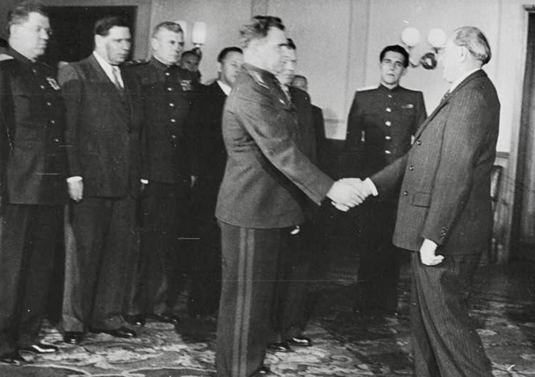Reading Between the Lines: Strategic Communication with Colonel Lyudnikov
- Maria A. Kithcart

- Nov 10, 2022
- 3 min read

Pictured: Colonel Ivan Lyudnikov in Stalingrad; In the Commander's dugout, 62nd Army. From left to right: K. A. Gurov, V. I. Chuikov. N. I. Krylov, I. I. Lyudnikov.
Forbes Council member Haseeb Tariq recently shared a timeless truth: “Communication is a critical part of any organization’s success.” The focused use of messaging to fulfill organizational goals is known as strategic communication. For example, in the realm of marketing, messages must “cut through” the static, or noise, of a vast number of messages to reach a potential customer in a meaningful way. Effective communication is essential in other functional areas of an organization as well—human resources, operations, etc.
When one considers strategic communication during times of heavy combat as faced by military personnel, the noise of battle greatly intensifies the effort to reach the recipient with a timely message. It is imperative that the commander and his staff are of one mind, reading “between the lines” of communication to see a deeper meaning. Marshal Chuikov mentioned in his book The Battle for Stalingrad the context of a conversation with Colonel Ivan Lyudnikov, who served as his subordinate commander for the 138 Rifle Division. Lyudnikov and his soldiers were hanging on by a literal thread during a most difficult stage of the battle—in November 1942 just before the Red Army counteroffensive was launched in Operation Uranus. Cut off from the rest of the 62nd Army, the tiny strip of land the 138th Rifle Division held at the Barrikady Factory was known as “Lyudnikov’s Island.”
"In these weeks there were several critical moments for the defending Russian troops: October 14 and November 11 were especially difficult days for them. Pressed against a narrow strip of territory, with the Volga behind them, they had no choice but to surrender the city or stubbornly defend every inch of land west of the river. ... On November 11 at 6.30 a.m., after air and artillery training, the enemy went on the offensive. Participation in this was five infantry divisions of the enemy (389th, 305th, 79th, 100th and 44th) and two tank divisions (24th and 14th), reinforced by separate units of the 294th Infantry Division, transferred by aircraft from Rossosh, and parts of the 161st Rifle Division, also transferred by aircraft from Millerovo. A three-kilometer front, on which the offensive was conducted, was launched from Volkhovstroyevskaya Street to Banna Ravine. Although most of these German divisions were unable (they were given a strong shake in recent battles), the number of enemy formations was surprising. Paulus clearly intended to crush Lyudnikov, the Division of Gorishny, Sokolov, Guryev and Batyuk with one blow, and reach the Volga. Exceptionally stubborn battles went on all day for every yard of land, for every brick and stone. The fight against hand grenades and bayonets went on for several hours. At the same time, our northern group under the command of Colonel Gorokhov counterattacked from the railway bridge at the mouth of the River Mechetka, south towards the Tractor Plant. On Mamayev Kurgan, Batyuk's division clashed head-on with the advancing enemy forces.
I cannot fail to mention the courage of the encircled division commanders led by Colonel Ivan Ilyich Lyudnikov. Despite the extremely difficult situation, they remained calm and confident. Telephone communications, of course, were broken. We only had a radio connection. I had a personal unencrypted conversation with Lyudnikov on the radio. We recognized each other's voices and didn't call each other by name. I didn't hesitate to tell him that help would be near, and that we would soon be able to help. I was hoping that he would understand why I spoke to him openly, and that our troops could in fact give him no help. He also said he hoped we would meet soon. Thus, we tried to mislead the enemy…”



